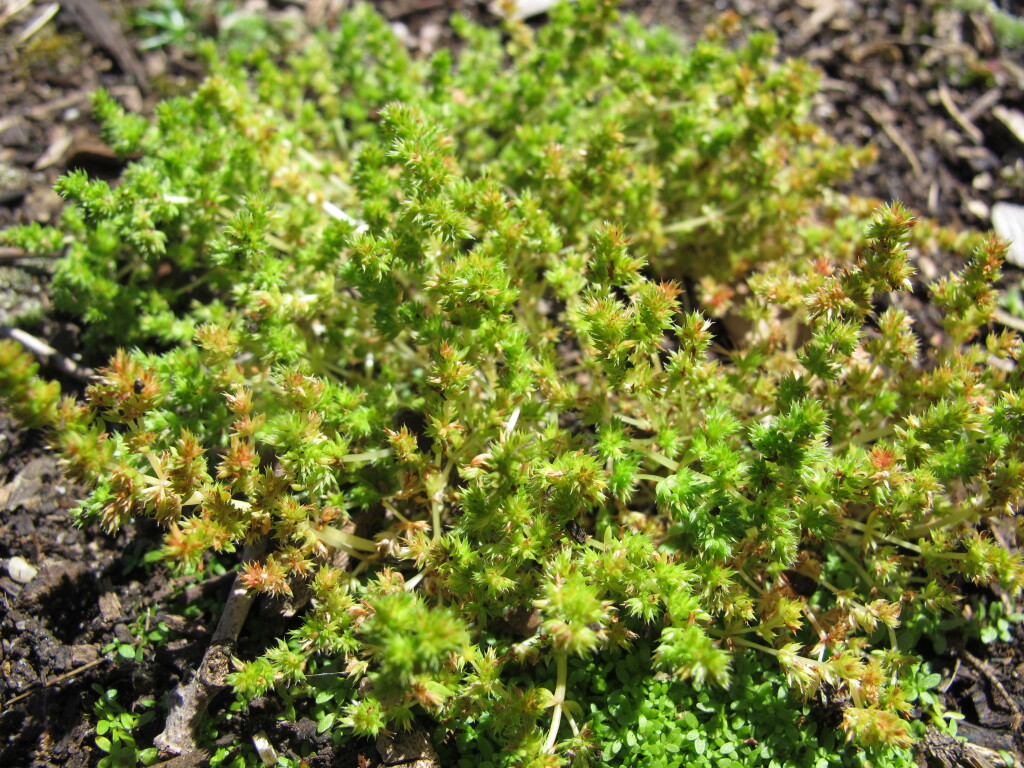Crassula alata var. alata
Three-part CrassulaDelicate annuals, usually with erect stems to 6 cm, little-branched, mainly from the first to fifth nodes, dried branches often winged. Leaves linear-lanceolate, 1.3.–4.1 mm long, 0.4–0.8 mm wide, acute, almost flat above, strongly convex below. Inflorescence 1–few spike-like thyrses with sessile cymules in axils of leaf-like bracts. Flowers 3-merous; calyx lobes linear-lanceolate, 0.8–1.5 mm long, pointed; corolla cream, lobes lanceolate, 0.7–1 mm long, acuminate; nectary scales oblong-cuneate, 0.2–0.4 mm long, c. 0.2 mm wide, rounded; carpels conical, with 2 ovules. Follicles smooth, releasing seeds through apical pore or detaching basally from receptacle; seeds 0.3–0.38 mm long, with longitudinal ridges. Flowers Aug.–Oct.
MuM, Wim, VVP, VRiv, GipP, Gold, CVU, GGr, DunT, NIS, EGL, HSF. Also naturalised WA, SA, ACT, NSW. Native to the eastern Mediterranean region. A weed of disturbed areas usually on hard gravelly soils, such as paths, roadsides, pavements or tennis courts.
Toelken, H.R.; Jeanes, J.A.; Stajsic, V. (1996). Crassulaceae. In: Walsh, N.G.; Entwisle, T.J., Flora of Victoria Vol. 3, Dicotyledons Winteraceae to Myrtaceae, pp. 542–555. Inkata Press, Melbourne.
 Spinning
Spinning

